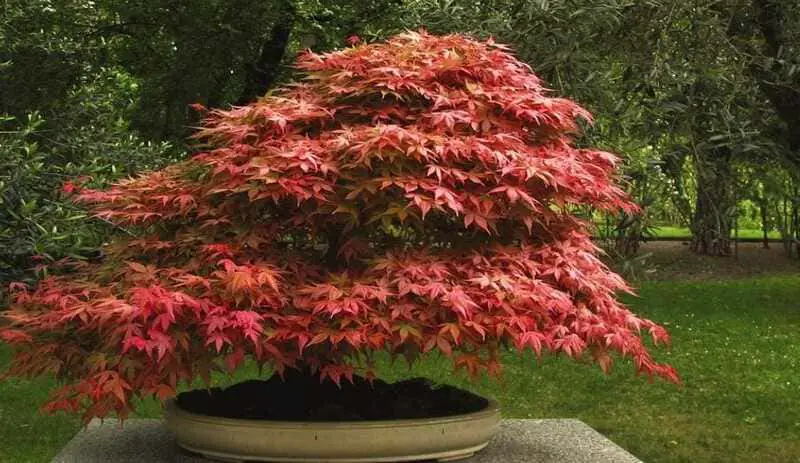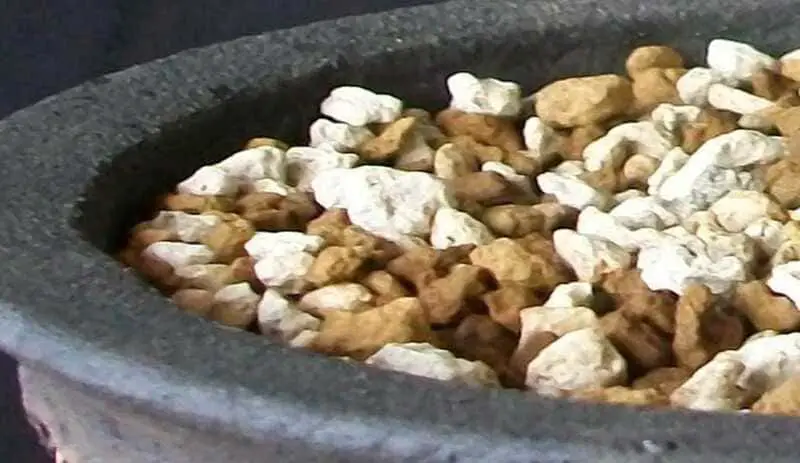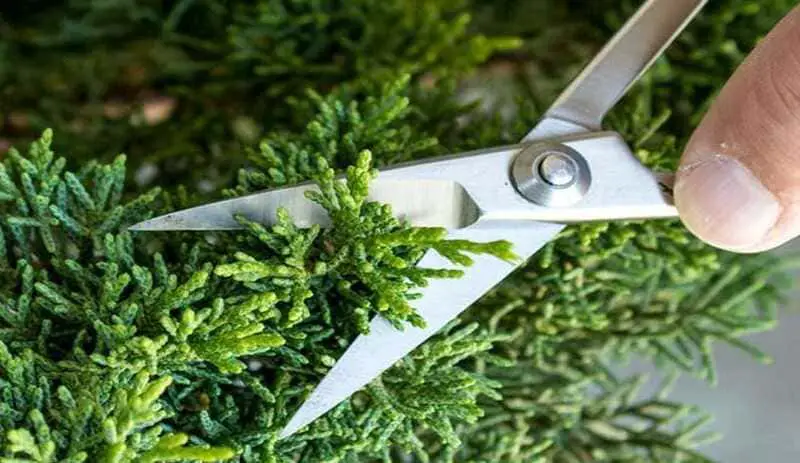Bonsai trees, those beautiful miniature trees that capture the essence of nature in a small space, have been cherished and cultivated for centuries in Japanese culture. And among the many species used to create these small living works of art, the Japanese maple stands out for its elegance, delicacy and distinctive fan-shaped leaves.
Growing a Japanese maple bonsai involves not only mastering pruning and training techniques, but also understanding the specific needs of this species. From initial tree selection to regular maintenance, each step in the growing process is crucial to achieving a healthy and aesthetically appealing bonsai.

In this article, we’ll explore in detail how to grow Japanese maple bonsai, delving into the key aspects of caring for and handling these little wonders. You will learn about the Japanese maple varieties best suited for bonsai, how to choose the perfect starter tree, the necessary pruning and training techniques, as well as essential care in terms of watering, fertilizing and protection against pests and diseases.
In addition, we will provide you with valuable tips and recommendations based on the experience of experienced growers to help you avoid common mistakes and make your Japanese maple bonsai flourish in all its glory.
Introduction to Japanese maple bonsai.
The age-old art of bonsai has captured the hearts of people around the world, but its origins can be traced back to the land of the rising sun: Japan. For centuries, the Japanese have cultivated and perfected this unique form of botanical expression, making it an integral part of their culture.
Bonsai is not simply a matter of reducing the size of a tree; it is a careful and meticulous process that involves molding and shaping a miniature living being. This ancient practice reflects the close relationship between humans and nature, and seeks to capture the essence of beauty and harmony in a reduced space.
Among the countless species used in the art of bonsai, the Japanese maple (Acer palmatum) has gained exceptional popularity. Its fan-shaped leaves, which change color with the seasons, and its elegant structure make the Japanese maple a perfect choice for creating bonsai of captivating beauty.
If you are wondering how to grow Japanese maple bonsai, you are about to embark on a fascinating journey that requires patience, dedication and a deep respect for nature. From choosing the initial tree to daily care, each step is critical to making your Japanese maple bonsai flourish in all its splendor.
Selecting Japanese maple species.
When it comes to growing Japanese maple bonsai, choosing the right species is a critical factor in achieving success in your project. Japanese maple (Acer palmatum) has numerous varieties, each with its own distinctive characteristics and specific requirements.
One of the most popular varieties is Acer palmatum ‘Dissectum’. This species is characterized by its finely divided leaves, which create a delicate, lacy appearance. It is ideal for those seeking an elegant and sophisticated look in their Japanese maple bonsai. ‘Dissectum’ generally has a low, horizontal branch structure, making it a perfect choice for cascading or semi-cascading bonsai styles.
On the other hand, Acer palmatum ‘Kotohime’ is a dwarf variety that is perfect for those with limited space. Its small, compact leaves create a charming appearance and provide excellent visual proportion in a small bonsai. It requires partial sun exposure and constant watering to maintain its health and beauty.
If you are looking for a variety with rich fall color, Acer palmatum ‘Osakazuki’ is an excellent choice. Its leaves change from bright green to a dazzling red in the fall season, creating a stunning show on your bonsai. Keep in mind, however, that this species requires a cool, moist environment, so providing adequate protection from excessive heat is essential.
Another popular variety is Acer palmatum ‘Shishigashira’, known as the Japanese lion’s head maple. Its dense, compact leaves, along with its compact, branched structure, make it an ideal choice for potted bonsai style. It requires partial sun exposure and a well-drained substrate for healthy growth.
The process of growing Japanese maple bonsai involves understanding the specific characteristics and requirements of each variety. By choosing the right species, you will be able to create a bonsai that fits your aesthetic preferences and can thrive in your specific environment. Remember to do further research on the varieties you are interested in and consult with bonsai experts for additional guidance on the care and successful cultivation of your Japanese maple bonsai.
Choosing a starter tree.
Choosing a starter tree is a crucial step in the process of growing Japanese maple bonsai. When selecting a sapling or seedling, it is essential to consider several aspects, such as the shape, trunk and health of the plant, to ensure you get a solid foundation for your future bonsai.

When looking for a starter tree, pay attention to the overall shape of the plant. Look for a Japanese maple with a structure that is attractive and fits the style of bonsai you wish to achieve. Look at the arrangement of the branches and make sure there is a balanced distribution, avoiding those with branches that cross or overlap unnaturally.
The trunk is another crucial element to consider. Look for a tree with a trunk that has an appropriate diameter for the size of bonsai you wish to create. A well-shaped trunk with character adds visual interest and contributes to the overall appearance of the bonsai. Look for natural movement and curves in the trunk, which will add appeal and authenticity to your tree.
In addition to the shape and trunk, the health of the plant is critical. Carefully examine the initial tree for signs of disease, such as leaf spots, discoloration or the presence of pests. Opt for a tree that shows vigorous growth, with healthy leaves and a well-developed root system.
Remember that the initial tree is the foundation of your future bonsai, so it is important to invest time and attention in its selection. By choosing a Japanese maple sapling or seedling with an attractive shape, interesting trunk and optimal health, you will be laying the foundation for successful Japanese maple bonsai growing.
The task of how to grow Japanese maple bonsai involves making careful decisions from the beginning, and choosing a starter tree is a crucial step in this process. Be sure to spend time finding the right tree that aligns with your aesthetic goals and preferences. With a wise choice, you’ll be on the right path to creating a stunning Japanese maple bonsai that will grow and thrive over time.
Substrate preparation.
Substrate preparation is a crucial aspect of growing Japanese maple bonsai. A proper substrate provides the ideal environment for healthy plant growth, ensuring a proper balance of water retention and drainage, as well as adequate nutrient supply.

The importance of a suitable substrate lies in the fact that Japanese maple bonsai require a well-developed root system and good air circulation around the roots. A quality substrate ensures that the roots receive the oxygen necessary for their health and growth, preventing problems such as root rot.
The ideal substrate for Japanese maple bonsai should have a light, well-drained structure. A commonly used mixture is a combination of peat, sand and akadama (a type of granular clay). The peat retains moisture needed for the roots, the sand improves drainage, and the akadama provides nutrients and helps maintain a porous structure.
It is important to note that the composition of the substrate may vary depending on the climate and specific growing conditions. In warmer, drier climates, more moisture-retentive material, such as coconut fiber, may be added to maintain an adequate moisture level. Conversely, in wetter areas, the proportion of material that promotes better drainage can be increased.
In addition to composition, the particle size of the substrate is also important. A mixture with different particle sizes helps maintain a porous structure, allowing the roots to breathe and develop properly. Avoid using substrates that are too compact or hold too much water, as this can lead to drainage problems and root rot.
Substrate preparation is an essential aspect of growing Japanese maple bonsai. It provides the roots with the proper environment for healthy growth and ensures the availability of water, nutrients and air. Remember to adapt the composition of the substrate to the specific needs of your climate and growing conditions, always aiming for a light, well-drained structure.
Pruning and tree training.
Pruning and shaping are fundamental aspects of Japanese maple bonsai cultivation. These techniques allow the tree to be shaped and structured, creating the desired aesthetics and promoting healthy growth.
Pruning is done to control branch growth and maintain the desired shape of the bonsai. Different pruning techniques, such as branch pruning and root pruning, can be used depending on the specific needs of the tree. When pruning branches, it is important to cut at an angle and close to a bud or node to stimulate growth in that direction. It is recommended to use sharp, disinfected pruning tools to avoid damaging the plant and prevent disease.

Shaping the tree involves giving the bonsai the desired shape and style. This is accomplished by careful selection of the main branches and the direction of their growth. A commonly used technique is pinching, which involves pinching off new shoots to encourage more compact growth and proper branching. Wiring can also be used to shape branches and guide them in the desired direction. When wiring, be sure not to over-tighten the wire to avoid damaging the bark and to allow for natural growth.
It is important to keep in mind that pruning and shaping the tree should be done gradually and carefully. It is advisable to observe the tree regularly and make the necessary interventions over time, rather than making drastic changes all at once. This will allow the tree to adapt and recover properly, avoiding excessive stress.
In addition to pruning and training techniques, it is essential to consider seasonality when working on Japanese maple bonsai. Some pruning and shaping can be done during the growing season, while others are more suitable for winter, when the tree is dormant. Know the growth cycle of Japanese maple trees and adjust your interventions accordingly.
Remember that pruning and training are ongoing processes in Japanese maple bonsai cultivation. Regularly observe and evaluate the shape and growth of the tree, and make the necessary interventions to maintain the desired structure and aesthetics. Research and learn more about pruning and training techniques specific to Japanese maples, and seek practical advice from experienced growers for optimal results.
Watering and fertilization.
Proper watering and fertilization are essential to maintaining the health and vigor of Japanese maple bonsai. These trees require a careful balance of moisture and nutrients for optimum growth, and this balance can vary with the season and the tree’s stage of growth.
During the spring and summer, when the Japanese maple is in full growth, it is important to provide regular and adequate watering. Keep the substrate slightly moist, but avoid excess water that can cause waterlogging and root rot. Water in the morning or evening to allow the tree to absorb water before nightfall. Be sure to evenly water the entire substrate and not just the surface.
During the fall, the Japanese maple tree enters its color change phase in preparation for winter. At this stage, gradually reduce the frequency of watering to allow the tree to enter its dormant state. However, continue to monitor the substrate and make sure it does not dry out completely. A slightly moist substrate will help protect the roots during the winter.
During the winter, when the tree is dormant, it is essential to reduce watering to the minimum necessary. Japanese maple trees need a rest season with drier conditions to prepare for the following spring. Only water when the substrate is dry to a certain depth, avoiding excessive watering that could cause root damage due to cold.
As for fertilization, Japanese maple responds well to slow-release organic fertilizers. Apply fertilizer according to the manufacturer’s directions and avoid overfeeding the tree, as this can result in weak and excessive growth. During the spring and summer, when the tree is in full growth, you can fertilize more frequently to provide needed nutrients. However, reduce or discontinue fertilizing during the fall and winter when the tree is dormant.
Remember that watering and fertilizing requirements may vary depending on the specific conditions of your environment and the condition of your tree. Regularly observe and assess the condition of your Japanese maple bonsai, and adjust watering and fertilizing accordingly. Pay attention to the signs the tree is giving you, such as dryness of the substrate, discoloration of leaves or slow growth, and adjust to its needs.

